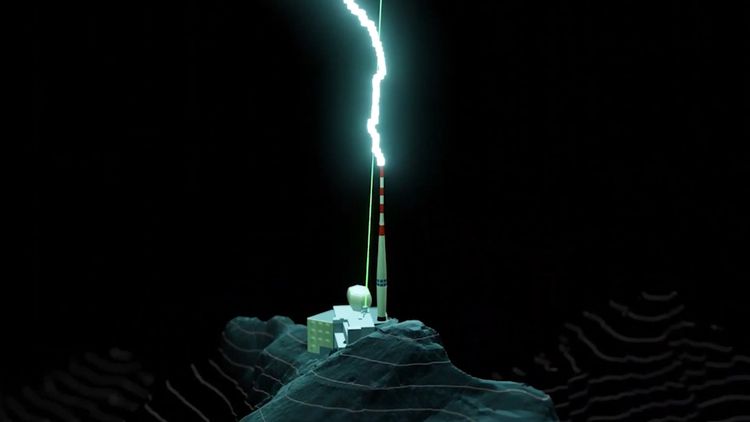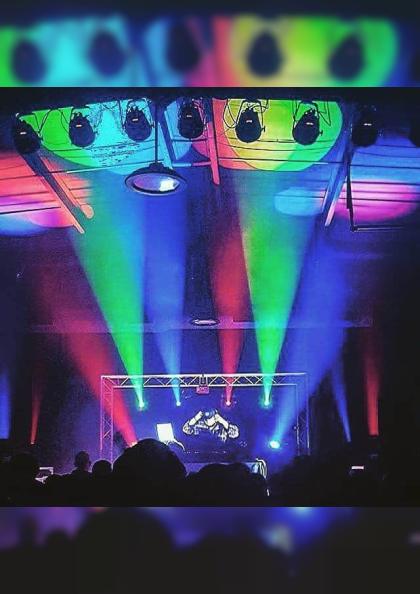Lightning strikes can be deflected by a strong laser

A robust laser may seize a lightning bolt and redirect its course through the sky like a modern-day Thor's hammer. Researchers report in Nature Photonics that such a laser successfully bent lightning toward a lightning rod in a mountainside experiment. Although lasers have been used to manipulate electricity in the research facility earlier, this is the first proof that the method operates in storms that actually occur in the real world. If successful, this research might one day improve lightning protection.
The traditional lightning rod, a metal pole several meters long anchored to the ground, is the most widely used lightning protection technology today. Due to the conductivity of the metal, lightning that might otherwise hit adjacent structures or people is attracted to it and securely discharged into the soil. However, a lightning rod's range of protection is constrained by its height.
According to Aurélien Houard, a physicist at the Institut Polytechnique de Paris in Palaiseau, France, if you need to protect some large infrastructure, like an airport or a rocket launching site or a wind farm, you would require a lightning rod of kilometer size, or hundreds of meters, for good protection. A metal pole that tall would be impractical. However, a laser might travel that distance, capturing far-off lightning strikes and guiding them toward metal rods buried under the ground.
On the Säntis mountain in northern Switzerland, Houard and his associates put this theory to the test. They placed a powerful laser next to a communications tower with a lightning rod at its top that experiences lightning strikes around 100 times annually. From July to September 2021, the laser was directed at the sky during thunderstorms over the course of six hours.
About 1,000 times per second, the laser blasted brief, strong bursts of infrared light onto the clouds. A low-density, charged plasma channel was formed as a result of the train of light pulses ripping electrons from air molecules and knocking some air molecules out of the path. This combination of actions made it simpler for electric current to travel along this pathway, like cutting a passage through the trees and laying down pavement (SN: 3/5/14). As a result, lightning was able to travel across the sky with the least amount of resistance.
The laser used by Houard and his team was calibrated to create this electrically conductive route just above the tower's tip. Because of this, a lightning bolt that was seized by the laser would be stopped before it could reach the laser equipment by the tower's lightning rod.
While the laser was active, the tower received four lightning strikes. A rather clear sky and one of those impacts made it possible for two high-speed cameras to record the event. In those pictures, lightning could be seen zigzagging down from the clouds and traveling 50 meters in the direction of the lightning rod on the tower.
The researchers used radio waves emitted by the lightning to trace the three bolts' courses that they could not observe. These radio waves demonstrated that, compared to other hits that took place while the laser was off, the three strikes closely matched the laser's course. This suggested that the laser had also directed these three strikes at the lightning rod.
Howard Milchberg, a physicist at the University of Maryland in College Park who was not engaged in the work, calls it a remarkable achievement, as scientists have attempted to achieve this for a long time. According to him, the major reason researchers are trying to control lightning is to make people safer. However, it would even be beneficial in charging procedures if this device ever became really efficient and the likelihood of guiding a lightning was boosted much beyond current level.
Robert Holzworth, an atmospheric and space scientist, is less certain about the potential uses. According to Holzworth of the University of Washington in Seattle, they only revealed 50 meters of guiding length, while the majority of lightning channels are kilometers long. It may thus take a lot of work to scale the laser system up to have a usable reach.
According to Houard, using a higher-frequency, higher-energy laser might increase its range. This is the beginning of a kilometric-range lightning rod.































